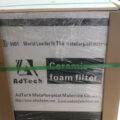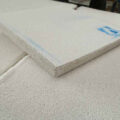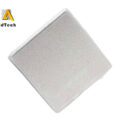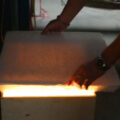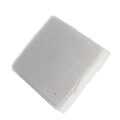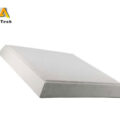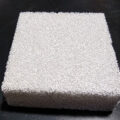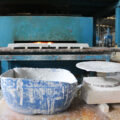Ceramic foam filter Canada uses polyurethane foam as a carrier, filled with ceramic slurry made of refractory aggregate sintering aids, binders and other fine powders and water, and then squeezes the slurry ceramic material around the foam fiber.
After drying, firing and sintering at high temperature, the polyurethane is decomposed by heat, leaving foamy ceramic products, that is, foam ceramic filters.
The ceramic material used for the filtration of molten metal has a very high melting point and will not melt during casting or decompose into the molten metal.
The number in front of ppi represents the pore density of the product. If the model is 10ppi, it means that the uniformity of the pores on any 25.4mm length is 8-12.
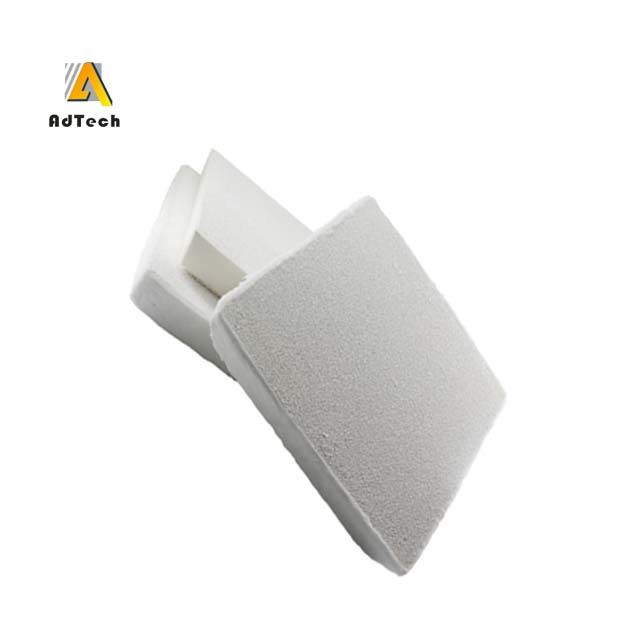
Ceramic Foam Filter Canada Filtration Mechanism
Screening
Just like a sieve, it prevents foreign particles and aggregates larger than the pore size of the filter surface from passing through.
Cake filter
After screening, many inclusions larger than the pores of the filter are trapped at the inlet end of the filter.
As the number of trapped inclusions increases, a large cake of inclusions is formed on the surface of the filter inlet end.
The “filter cake” makes the liquid thinner, so that the inclusions smaller than the pore size of the filter are also partially caught on the “filter cake”.
Deep bed filtration
Inside the foam ceramic filter, the path through which the melt flows is tortuous, and there is even a phenomenon of cross flow in a small local area. This mainly plays two roles:
1. The probability that particles can contact the filter.
2. Make the melt flow velocity and flow direction change faster, so that the fine inclusions in the melt can be left behind in a corner after being collided and caught by the straight hole filter slag (screening) ceramic foam filter Filter cake and deep filter bed of slag blocking (screening) foam ceramic filter
Function of Ceramic Foam Filter
• Removal of impurities and slag: purification of molten metal and simultaneous degassing (adjustment of turbulence):
-After filtering, the viscosity of the molten metal decreases and the fluidity of the aluminum alloy liquid increases by 10% -15%. Therefore, filtration improves the filling ability of the molten metal.
–The metal melt flow is turbulent before filtering, and becomes laminar after filtering (the tortuous bend in the flow path of the foam ceramic filter), which reduces the gas volume and secondary slag formation;
-As the filtration proceeds, the filtration mechanism ranges from sieving, filter cake to deep bed filtration, and the purity of the filtered metal liquid is getting higher and higher (without exceeding the filtration capacity of the ceramic foam filter)
• The scrap rate of parts is reduced,
• Part cutting performance improved
• The mechanical properties of the material are significantly improved, especially the elongation.
Selection of Filter Size
• Step: Calculate the minimum cross-sectional area of the sprue
• Step 2: Calculate the sum of the cross-sectional area of the cross-runner and the cross-sectional area of the inner runner,
• The third step: determine the placement and number of filters;
• Step 4: According to the filtration speed of the filter per unit area, the filtration capacity of the filter per unit area, the actual pouring speed and the weight of the molten metal passing through the filter and the purity of the molten metal
The size of the filter (if the liquid metal is too pure, multi-stage filtration is required).
Namely: the filtering speed of the filter> the pouring speed of the metal liquid The filtering capacity of the filter> the amount of the metal liquid inclusions


